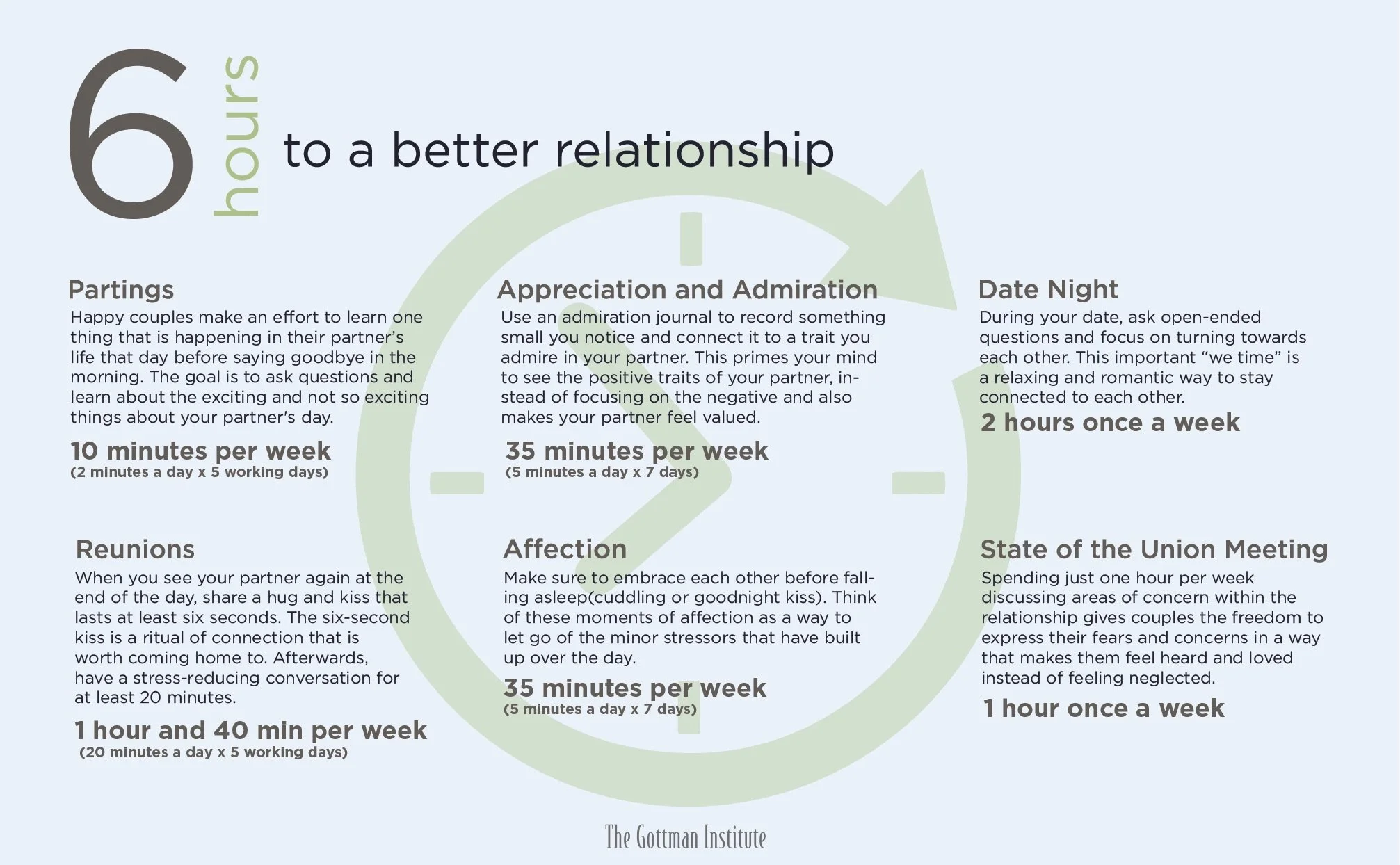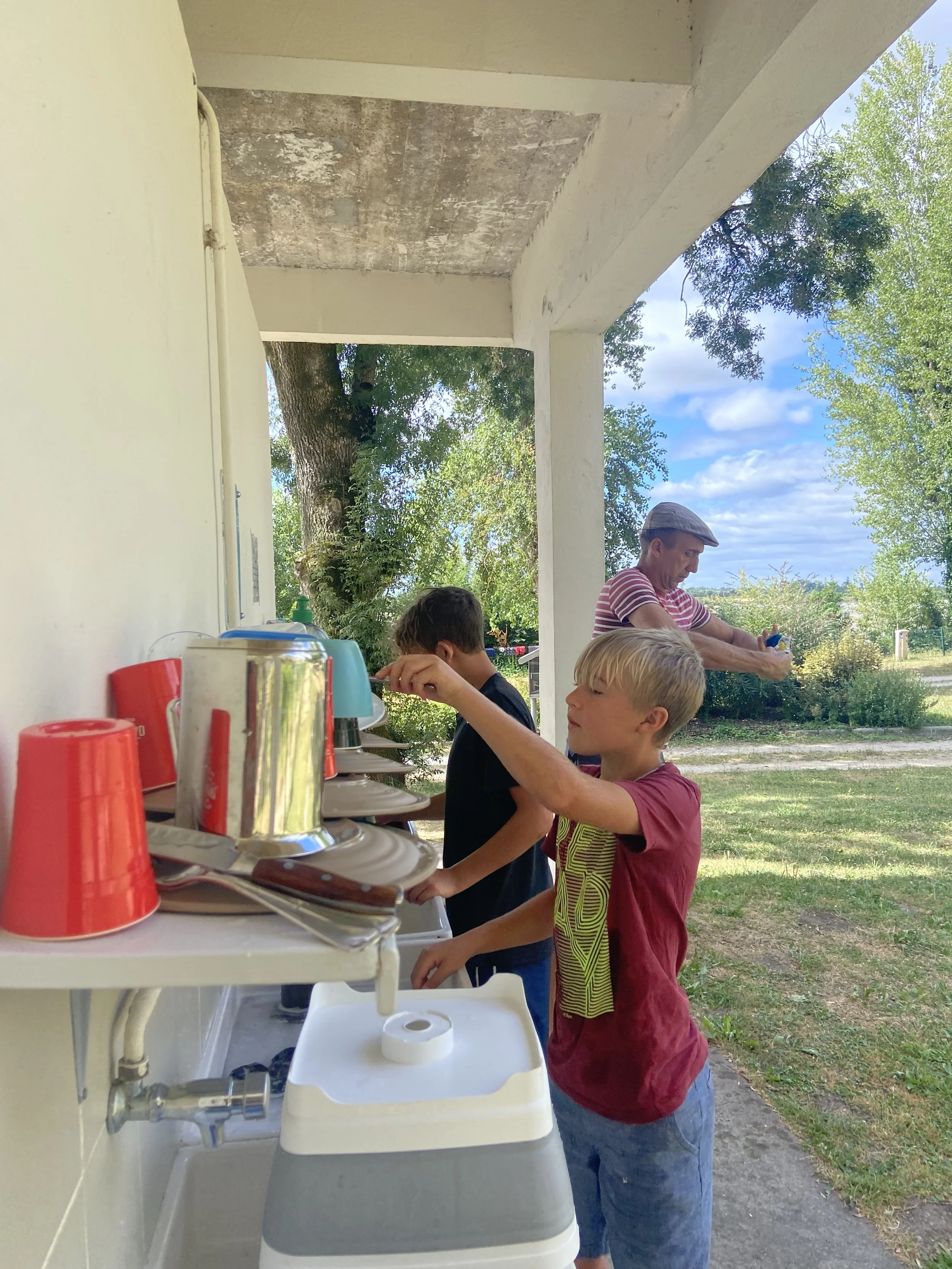Intentionality and Rituals of Connection
Intentionality creates meaning. Yes. when we imbue our actions with meaning, the actions themselves take on more meaning. When we do things day after day but don’t infuse the action with feeling, then the action is just an action. It is sterile. Have you ever felt the difference between a kiss that is just a habit and a kiss with feeling? I have and it is different.
Have you felt the difference in presence when someone speaks to you like your conversation is the most interesting thing in the world, versus when someone checks their phone periodically while talking to you? How do you feel? How does it feel different?
Intentionality makes us feel important. Eating, breathing (meditating), communicating, kissing, having sex, walking, exercizing, cooking, etc… can all be filled with intention. (Intentionality isn’t just for couples either. We can all create rituals to nurture ourselves).
Researchers at UCLA observed 30 dual-career couples with young children to understand the daily challenges for finding opportunities to build strong relationships and families. They discovered that these couples:
Spend less than 10% of their time at home with each other alone
Are career-focused with long working hours (partner one) and a have a double burden of work and childcare (partner two)
Prioritize children and household needs over the needs of their spouse or self
Become more like roommates, drifting apart emotionally and physically
Miss important opportunities to connect emotionally on a daily basis
When we are falling in love, we are more deliberate about going on dates, having intimate conversations to learn about each other, and making time for shared activities. We are driven by longing that is part of the attachment cycle or love cycle. It's simple to fall in love; it's much more difficult to maintain love, which necessitates intentionally producing moments of connection and intimacy.
Couples must resist the temptation to go with the easy option of just allowing things to happen in their relationships. The reality of love is that it needs constant attention and upkeep. Like a garden, it won’t flourish without sun, rain, a little weeding and attention. We don’t expect a garden to stay beautiful for years after just 1 year of planting.
According to William J. Doherty, author of The Intentional Family, we need to focus on two connection killers to make our relationships better: how we spend our time and how we use technology.
Many couples are time-poor. It is true that between all the logistics and running around, we often have very little actual time for our partners. A busy couple can first focus on improving the quality of their interactions by truly focusing on each other and the relationship during the little time that is available.
Couples fail to intentionally disconnect with the outside world, missing the opportunity to truly connect with each other’s inner worlds. Our electronic devices are always sending us notifications that interrupt and distract us from being together and truly paying attention. Just making some minor changes in how devices are used can significantly improve the quality of a couple’s time together.
One of the most effective methods to intentionally create connection is to make our everyday actions (that we already do) special and meaningful. Shared rituals can turn routine behaviors into moments of intimate connection. Rituals often arise naturally, but can also be mindfully crafted. Partners may ritualize simple activities.
A romantic ritual is a recurring, planned, and, importantly intentionally meaningful to both partners. A ritual can take one minute. It is the energy invested that makes it special. Stan Tatkin (one of the world’s experts on Attachment Theory) states that “you can and should be your partner’s best antidepressant and anti-anxiety agent.” Rituals are not about what you do but the meaning you give to the moments of your life. They don’t have to be tied to religion or spirituality. They can be subjective and personal. They’re sacred because you decide they are.
But what makes a ritual? Ministry innovation fellow at Harvard Divinity School, Casper Ter Kuile says there are three elements:
* Intention
* Attention
* Repetition
Rituals of Connection
Dr. John and Julie Gottman, creators of the Gottman Method with over 40 years of couples research under their belts, developed their theory based on what the masters of relationships were doing right. It is a theory built around what they saw happening in successful relationships. (For more on the Gottman check out my blogpost on the Gottman Method Explained, Gottman Institute Concepts to Build On, and My Favorite Gottman Relationship Guides). They often speak about rituals of connection that couples can do together that take very little time out of their day but have a huge impact on intimacy.
The Gottman’s research suggests couples could change the trajectory of their relationships by devoting an extra six hours per week to their relationships. The following rituals of connection not only provide us with access to one another, but also relieve the stress we experience on a daily basis.
Get up early and share a cup of coffee, or return to bed for a 15-minute discussion before going back to sleep.
Before beginning the day, snuggle for a few moments.
Tell each other one thing you like about the other person.
Have breakfast together
Focus your attention on softening your gaze for a few minutes before falling asleep by looking into each other's eyes.
Make some soothing tea and chat while relaxing in bed.
Read to one another every day.
Express your gratitude to your spouse.
A six-second kiss. Dr. Gottman who has observed thousands of couples for 40 years calls this kiss a “kiss with potential.”
A genuinely comprehensive embrace that embraces both individuals (not a one-arm hug).
Ask your partner what are they most excited about today? Or what are they worried about today? Dr. Gottman calls this building a map of your partner’s daily life.
Tatkin suggests a “Welcome Home routine.” Greet your partner and give them a long hug and kiss.
Hugging to relax: Dr. Schnarch, a renowned Couples Therapist, encourages partners to hold each other until they relax. This physical connection can help reduce stress and reconnect the couple.
Falling in love necessitates a lot of one-on-one conversation about the good and unpleasant aspects of each partner's day as well as what is significant to each individual.
According to Dr. Doughty:“Few dating couples would get married if they had as little focused conversation as most married couples do.”
Dr. Gottman’s research highlights that after couple’s therapy, the couples who have a daily stress-reducing conversation are less likely to relapse than couples who don’t talk daily.
Intentionally talking with each other one-on-one, for just 15 minutes, can be good enough for busy couples. Focus on discussing how your daily events made you feel, rather than just talking about the facts of the events that occurred. Notice the difference between conversations that are all logistics and planning and conversations that touch something deeper. Conversations that go below the surface and invite true connection (informational versus significant communication) will bring you closer.
Relationships thrive when couples realize that the seemingly insignificant moments, such as a loving hug and kiss when one partner comes home, are often the most significant of all. By being intentional, couples can transform dull, mindless routines into a source of connection and fun.
Are you looking for help with your relationship? Do you feel that a relationship coach could help you working on your couples skills? Is communication an issue? Have you ever considered couples therapy or counseling? As a psychotherapist and relationship coach, I am uniquely positioned to help you through these moments of disconnect and conflict.
__
Learn more about my approach to life consulting and relationship coaching here or get in touch for your free 30-minute consultation here! Don’t forget to follow along @LilyManne on social for more regular updates!



